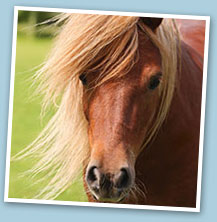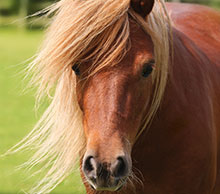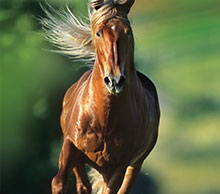
Keep to the beat
Dressage to music, also known as ‘freestyle dressage’ or (at the top level) kür, has rocketed in popularity in recent years. It involves riders creating a dressage routine, including a number of compulsory movements to be ridden in any order, and setting the whole thing to music. The tests are judged on both technical and artistic merits. Previously, the lowest level to include freestyle classes was Novice, but since January 2012 both Intro (Walk and Trot) and Prelim Freestyle tests have been included in British Dressage competitions.
There are loads of reasons to give dressage to music a go. It’s fun, for a start, and can provide a new goal to work towards in your training. Many horses perform better with music, and the tempo of the music can help improve your horse’s rhythm. You can effectively create a test designed to show off your horse’s best movements and minimise his weaker ones. So if you want to give dressage to music a go, how do you get started?
1. Cover the basics
Most dressage to music tests are held as affiliated British Dressage competitions, although there are a number of unaffiliated competitions that run freestyle classes. But there are restrictions about playing music in public, so to ride in any freestyle classes you must become a music member of British Dressage.
2. Choose the right test
You want to make your dressage to music debut at a level you’re comfortable with, so choose a level at or below the one you’re currently competing in, and make sure you’re confident riding through all the compulsory movements.
3. Make the floor plan
There are two ways to approach devising a floor plan. You could choose to put together a routine first, starting and ending with the centre lines and halts, and working through the compulsory movements in any order. Ride through your test in the correct sized arena (this is important – if you practise at home in a 44m x 18m arena, you won’t have the timings right when you do the actual competition) and ask someone to video it, ensuring it remains within the time limits set for each test. Once you’ve done this, you can then go about finding music to suit each of your horses paces, and arrange the music to suit. Alternatively, you can have your horse filmed working in walk, trot and canter on both reins, and you can set music to suit each pace. Create a soundtrack of the requisite length, and then finalise your floor plan based on this. The benefits of doing it this way round is that you can set the movements to interpret the music – after all, it’s dressage to music, not dressage with music.
4. Be creative
Remember the judge might be sitting through 30-plus tests in a row, so try to ensure that your test and music stands out from the rest. Really use the arena – you can cut across the school and do circles anywhere you like, so don’t feel that you have to stick to the track or circle or turn at the ‘usual’ markers. However, judges like symmetry so try to replicate the same pattern of movements on both reins. Try not to use music that gets overplayed in dressage to music – Abba and Queen tend to be used a lot, so unless their songs really suit your horse consider using another artist. There are lots of companies that will help you put your music and routine together for a small fee, which can be a big help if you’re unsure how to go about it.
5. Pick the right tune
You want the music to suit your horse. If your horse’s movement isn’t very big or extravagant, don’t use overly dramatic music. Similarly, slow or classical music may not suit a little cob with short paces. Go through all the genres of music – classical, dance, country, rock and so on, and find one that works. You’ll need different tracks for the three different paces, but try to use music with a similar theme – for example, songs from the same musical, or same artist. You can also choose where to start your music – some riders have ‘entrance’ music as they ride into the arena, whereas others choose to have their music start once they’ve halted and saluted the judge.
6. Be prepared
Once your floor plan is set and your music chosen, have several run throughs to (loud) music to make sure your horse doesn’t become unsettled. If he does get alarmed by music, try having a radio playing in his stable to get him used to it. Record two CDs with your music, in case one doesn’t work. Make sure you label your CDs with your name and horse’s name, plus instructions of where you want the music to start.
7. Enjoy it!
One of the benefits of Freestyle tests is that the judge doesn’t know where or when you plan to ride certain movements, so if your horse spooks or if you lose your way, don’t panic – you can always make subtle alterations during the test. As long as you don’t end up going up the centre line and halting with your back to the judge, no one needs to know you changed your plans!
If you’re thinking of giving dressage a go, have you heard about the Petplan Equine Area festivals? Click here for more info.





